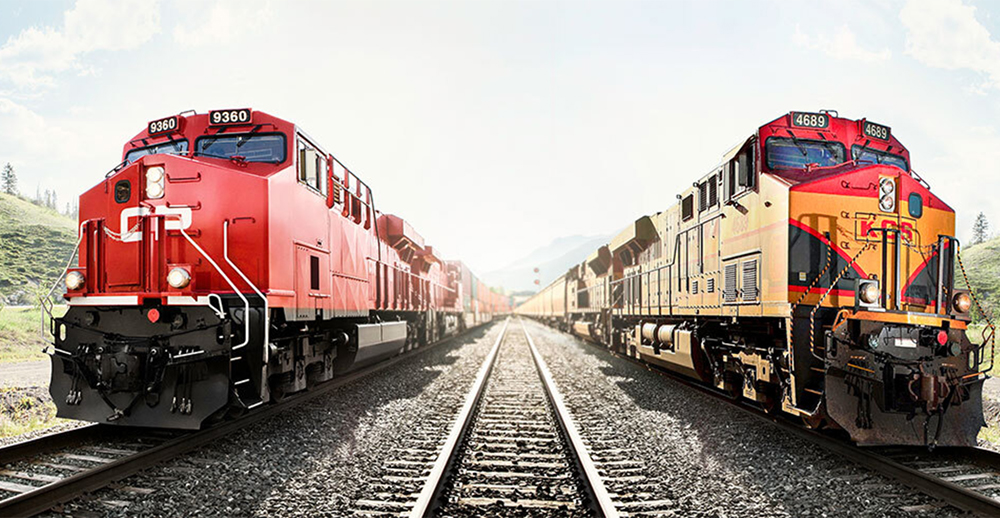Soybean crushing facilities are said to be the key reason why Archer Daniels Midland is attempting to take over Bunge
ROSARIO, Argentina/CHICAGO, (Reuters) — On the banks of the Parana River, machines hum 24 hours a day in Argentina’s grain ports, churning out soybean-based animal feed and shooting it straight into the hulls of ships bound for buyers worldwide.
The wind stirs up fine meal dust, creating a protein-filled haze. Rosario is the biggest soybean-crushing hub in the Americas, where 22 plants process 157,500 tonnes of soybeans per day into soybean oil and feed that fattens livestock in markets from the United Kingdom to Indonesia.
These plants are a key reason why top United States grains merchant Archer Daniels Midland Co. is attempting a takeover of longtime rival and soybean-crushing powerhouse Bunge Ltd., industry executives, analysts and grains trading sources said. The deal, estimated at US$16 billion, would be the biggest ever by one of the world’s four agricultural trading giants.
Read Also

Farming Smarter receives financial boost from Alberta government for potato research
Farming Smarter near Lethbridge got a boost to its research equipment, thanks to the Alberta government’s increase in funding for research associations.
ADM and Bunge are the “A” and “B” of the so-called “ABCD” group of firms that dominate global grains trading, along with Cargill and Louis Dreyfus.
ADM’s advance on the financially faltering Bunge reflects larger profit pressures across the grains sector amid a global glut now entering its fifth year, holding commodity prices at sustained multi-year lows. Such conditions are widely expected to drive a wave of consolidation among agricultural firms.
ADM is the only one of the ABCDs that has no crushing capacity in Argentina, where Bunge has four plants.
“Where is the value in Bunge from ADM’s point of view? It is in South America, including crushing and elevator capacity in Argentina,” said a Buenos Aires market source with knowledge of the situation.
ADM would also take on Bunge assets in Brazil, which include factories, mills, silos, distribution centres and port terminals. Bunge is bigger than ADM in Brazil, as well as in Argentina.
Juan Luciano, the Argentina-born chief executive officer of U.S.-based ADM, told investors this month that ADM aims “to plug holes in our value chain”, although he made no reference to reports the firm has approached Bunge.
“The hole in their value chain is called Argentina because ADM hasn’t any crushing facilities here,” said Buenos Aires-based August Remijsen, former Southern Cone chief executive officer of trading group Toepfer, which was recently absorbed by ADM. “The most efficient crushers in the world are located in Argentina.”
Representatives of ADM and Bunge declined to comment on the reported merger talks. Bunge last year turned down overtures from Switzerland-based Glencore.
Argentina is the world’s top exporter of soybean meal and soybean oil, used for cooking and making biodiesel. Most is shipped from Rosario, located in the Pampas farm belt.
The nation’s massive soybean crushers and grain elevators are next to the deeply dredged Parana. The set-up offers logistical advantages over the U.S. and Brazil, where moving grain involves more costly ground transportation and loading products on and off barges.
Bunge, founded in 1818 in the Netherlands, is the world’s top industrial producer of soybean meal and soybean oil. However, declining profits have made the storied firm vulnerable to a takeover, analysts said.
“It’s the inexorable path ahead” because of the erosion in Bunge’s earnings, said Pablo Adreani, head of Argentine farm industry consultancy Agripac.
Argentina has launched reforms meant to attract foreign investors under business-friendly President Mauricio Macri, who is lowering export taxes on soybean meal and soybean oil.
Bunge exported 11.2 percent of the 32.8 million tonnes of soybean meal shipped from Argentina last year and 7.8 percent of the 5.9 million tonnes in vegetable oils, according to agriculture ministry data.
About 60 percent of Argentine soybean oil went to India and Bangladesh last year, emerging markets where ADM is keen to increase access. Soybean meal was destined mainly for Vietnam, Indonesia, the United Kingdom and Italy.
ADM exported 9.1 percent of the overall 47.9 million tonnes of raw grains shipped from Argentina in 2017, close to Bunge’s 9.7 percent. A combination of the two firms would be Argentina’s No. 1 raw grains exporter, a title currently held by COFCO-Nidera, which combined early last year to capture 17 percent of the market.
Under this scenario, Dreyfus would be left in the dust with 9.5 percent of the 2017 raw grains export market.
But the ADM-Bunge tie-up could face regulatory scrutiny in the U.S., where ADM is already the largest grain merchant. The biggest overlap between ADM and Bunge in the U.S. is in grain origination and oilseeds processing. Regulators could force ADM to divest substantial assets as a condition of approval, according to antitrust experts.
The firms would have to overcome opposition from U.S. farmers who fear that giving more market share to ADM could hurt wheat, corn and soybean prices, said Peter Carstensen, who teaches antitrust law at the University of Wisconsin Law School.
The deal could also face opposition from farmer groups in key agricultural markets, including the European Union, China, India and Brazil, he said.
Regulators in Argentina would also have to approve any deal. A spokesperson for the country’s regulators declined to comment on the matter.
Ocean-going vessels can reach the crushing plants that dot the banks of the Parana because the river is dredged to a depth of at least 10 metres from the port of Timbues, just north of Rosario, to Buenos Aires, 460 kilometres to the south.
Bunge can process 18,000 tonnes of soybeans at its Rosario-area facilities every day, according to the local grains exchange. At the current export price, that means Bunge can crush $7.3 million worth of soybeans in 24 hours.
Despite the industry’s sustained bout with oversupply and low prices, the soybean meal business has room to grow, said Adreani. That’s because a growing world population, now approaching eight billion, will continue to drive demand for meal-fed beef and pork, he said.
“ADM is looking at the advantage it would have over the 15 or 20 years ahead,” Adreani said. “It’s a smart strategy.”

















